Vegetables to plant in July: 10 crops to sow and grow this month
Discover the best vegetables to plant in July, and enjoy Florence fennel, baby carrots, dwarf beans and more

Janey Goulding

Deciding on vegetables to plant in July may not feel quite as compelling as deciding on what to harvest at this time of year. We understand that you’ll be wanting to kick back and enjoy the results of your hard labor. However, as you start feasting on early tomatoes, artichokes, cucumbers and even maincrop potatoes, bear in mind that gaps will start emerging on the plot as well as in the greenhouse. So why not make the most of the sunshine to nudge a few quick developers along?
Intercropping or interplanting gives you a chance to partner up cropping plants at this point in the vegetable planting calendar, so small and speedy types can be interspersed with slower-developing crops that are still a few months from full maturity. You’ll find a variety of baby roots and fast-growing salad and leafy crops can be easily planted amongst prospective autumn harvesters. Often this benefits both kinds of crops, as well as making the most of precious growing spaces. Leafy lettuce and spinach flourish nestled alongside larger brassica types like cabbages and cauliflowers, while squash give shelter to mustards, beets and radishes.
As longer summer days begin inching back towards the autumn equinox, there is still potential for droughts – so just keep an eye on watering with any crops you plant in the ground, and consider incorporating a little partial shade into the plot with coverings that can protect tender veg from the harsh rays of the noon-day sun. Then just follow our guide to some of the most vibrant and reliable crops to kickstart now.
10 vegetables to plant in July for months of tasty harvests
Our guide to the best vegetables to plant in July will show you how to quickly turn around some of the tastiest traditional upstarts such as baby carrots and make final sowings of beans and peas to enjoy in the fall.
Sow fennel direct now as there is less chance of crops bolting, and make the most of any spots under glass for starting off lettuce. Don’t forget to take advantage of the combination of warm days and nourished soil to plant some Chinese cabbage (pak choi) to add a touch of the exotic to your late season feasts.
1. Dwarf French beans
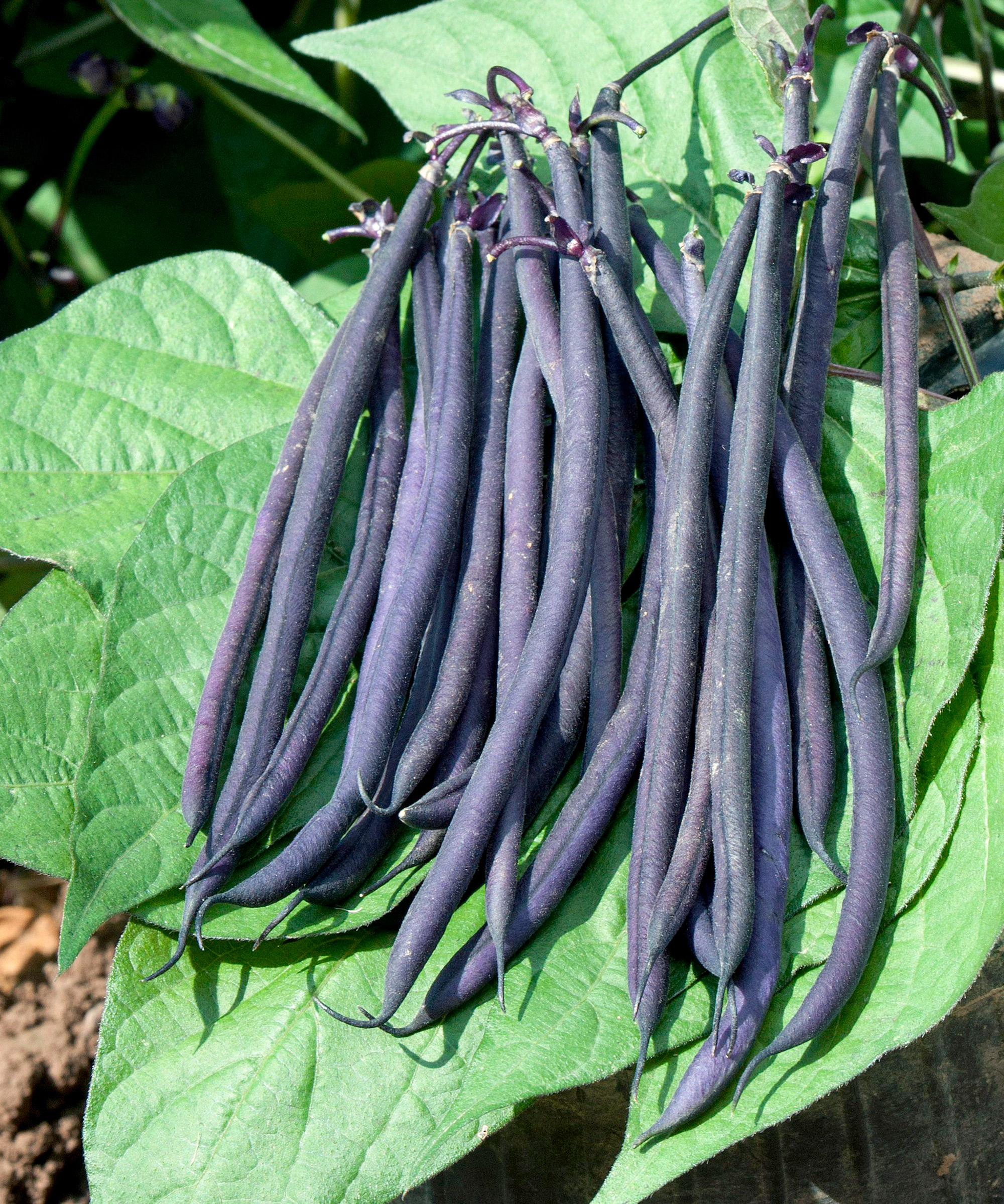
Legumes are often some of the first plantings we make in the gardening calendar, so it may seem odd to be suggesting that they are some of the best vegetables to plant in July. But for those who couldn’t wait until summer to grow French beans, it’s worth bearing in mind that any harvests from dwarf varieties only last for a few weeks – so if you are banking on beans well into the fall, it’s worth bulking up your reserves with some final sowings. If you also grow runner beans you are sure to appreciate the backup, since French beans tend to be more reliable.
Another great reason to plant French beans (Phaseolus vulgaris) at this point in the calendar is that they prefer to develop quickly with as few checks as possible. As long as you have sunshine, you’ll find sowing direct in summer and allowing them to grow without undue fuss will give these crops the best chance. Choose a sunny spot with a little shade, and a moist, well-draining alkaline soil topped up with aged garden compost and a light granular feed, and sow 4in (10cm) apart. French beans make excellent companion plants for cucumbers, which benefit from the nitrogen. Alternatively, plant in containers with good drainage holes.
Try stringless ‘Tendergreen’, pretty ‘Red Swan’, fast ‘Ferrari’ and purple ‘Mistik’. As Chris Bonnett of Gardeningexpress.co.uk explains, you should pick young for the tender harvests. ‘When they are 4in (10cm) long, they’ll break off easily, so harvest regularly when young.’
2. Spinach

Low maintenance, quick-maturing, extremely nutrient rich and surprisingly diverse, spinach deserves a spot on every plot. It also offers a welcome ‘two-for-one’ deal for any kitchen garden – make the most of high summer to grow two distinct types of spinach: annual and perpetual.
Buttery annuals such as heirloom ‘Bloomsdale Long Standing’ and slow-bolting ‘Toscane’ quickly provide weeks of harvests with successive sowings, while robust Perpetual mixes fare especially well on dry soils.
Spinach benefits both from the initial warmth of July sowing and the coolness marking the onset of autumn. So select a sunny spot to ensure peak germination, and direct-sow into drills 1.5in (4cm) deep and 2ft apart. Once seedlings are a few inches high, Amateur Gardening’s veg expert Lucy Chamberlain advises thinning to 3in (8cm) apart, then watering well as crops mature in fresher climes.
Anyone knowing how to grow eggplant will find spinach an ideal interplanting companion, while growing radishes or nasturtiums nearby enhances the tastiness of both crops. For perpetual spinach, Chris recommends a soil rich in organic material and urges growers to keep the earth moist at all times.
Around two months later, harvest every alternate plant. Cut back to just above the base of the plant to encourage more leaves. You can enjoy the pickings well into the fall either as baby leaves for crunchy salads or as larger, fatter additions to the soup or casserole pot.
3. Salad onions
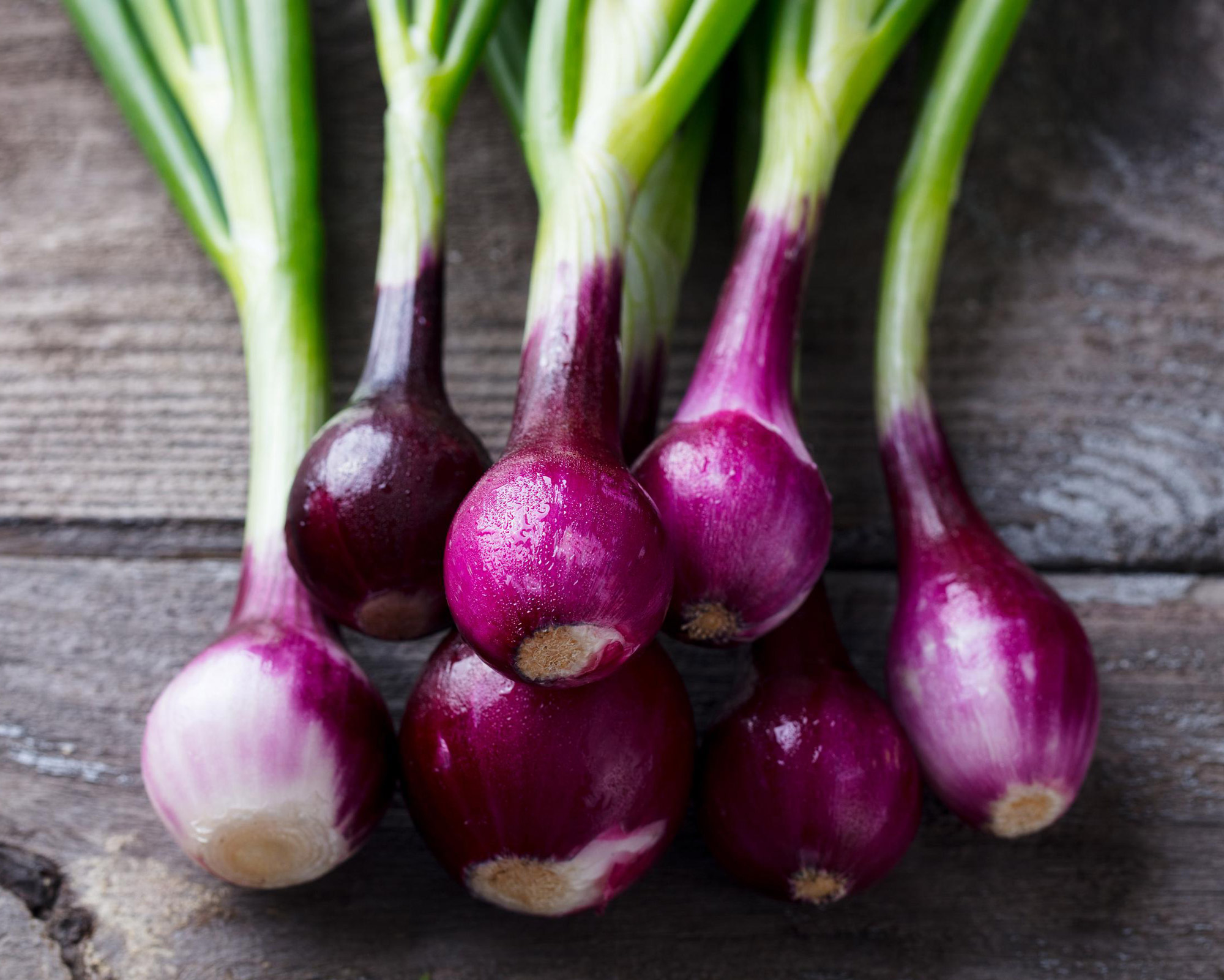
Spring onions, scallions, bunching onions: whatever you call them, they liven up all manner of salads and stir-fries. Quick to mature, they are excellent intercropping partners for cabbage and parsnips. If you have a herb garden, you will find mint and parsley make excellent planting partners for these small yet flavorful alliums. They are also some of the best companion plants for carrots, because they help deter the carrot root fly. Sown every few weeks until September, they will keep you well stocked in tasty bulbs well into winter, making them some of the most versatile and useful vegetables to plant in July.
Alongside traditional bulbs like ‘White Lisbon’, recent breeding has expanded the scallion range to include vibrant varieties like ‘Purplette’ and red ‘Apache’. These alliums are some of the easiest vegetables to grow – just make sure the ground has been finely raked to remove all weeds and stones. Also, treat the planting site with organic material earlier in the year so it is fertile and well draining. Sow in rows 6in (15cm) apart and water well. Apart from this, knowing how to grow onions is easy. Keep the soil moist for the crunchiest crops; just resist the temptation to overwater, to protect from downy mildew.
Spring onions have shallow roots so don’t hoe weeds (instead, remove by hand). You can harvest as soon as eight weeks from planting. Lift while young when 6in (15cm) tall using a hand fork. To keep harvests fresh for longer, place individual bulbs in a jar of water overnight.
4. Chard
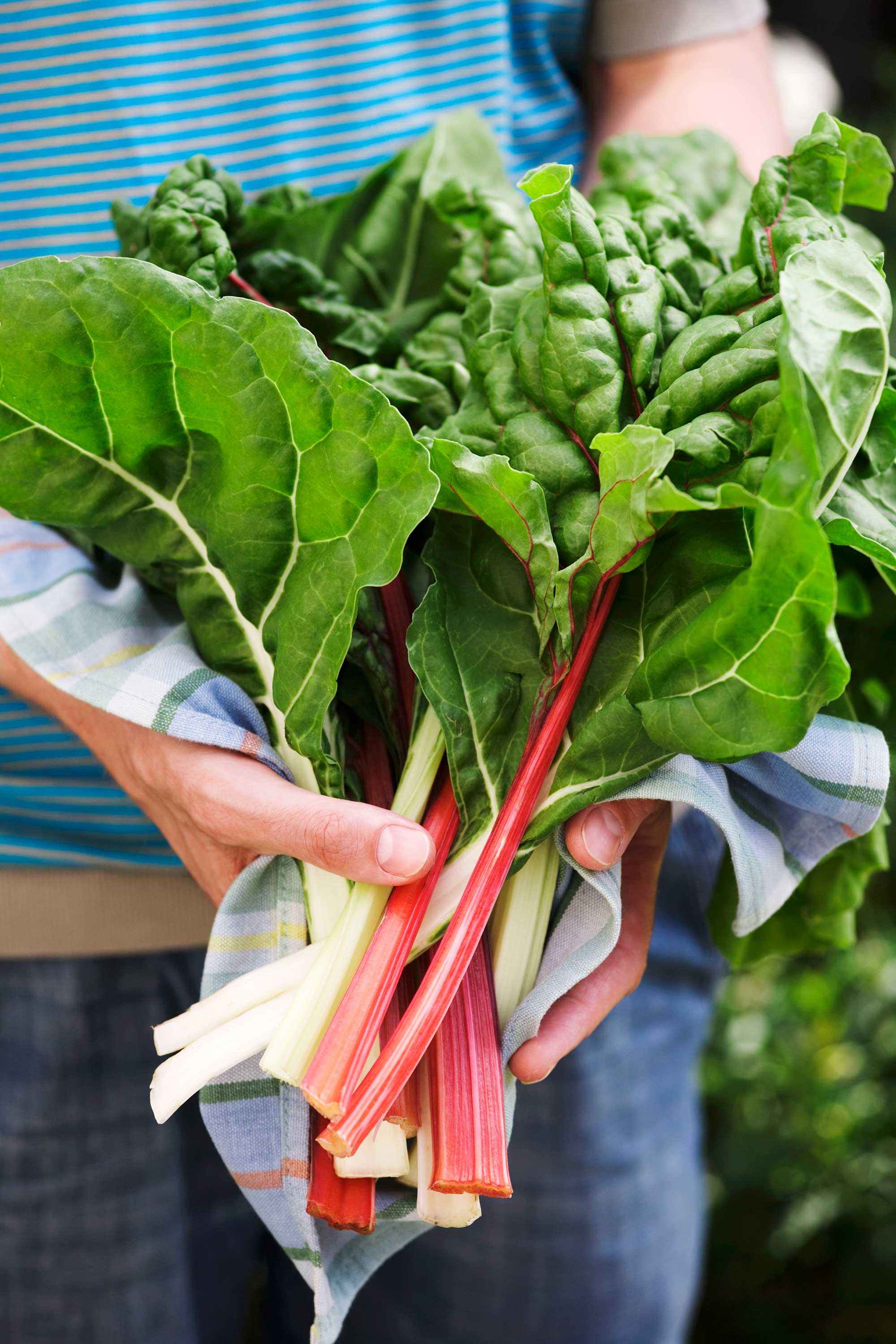
Leafy chard is a delicious, nutrient-dense crop that is super versatile in the kitchen. And, it's easy to grow. According to Guy Barter, Chief Horticulturalist for the RHS, you can sow it now for a crop in April with masses of fresh tender foliage.
Guy recommends to sow the seeds in rows 12in (30cm) apart. Thin the seedlings to 8in (20cm) between plants once they begin to emerge. 'Nitrogen-rich fertilizer in late winter will boost yield and quality,' he adds. Choose an open, sunny site, with rich, moisture-retentive, free-draining soil. Chard makes one of the best companion plants for garlic and is also happy planted near chives because the smell deters pests and they attract beneficial insects like hoverflies.
You can treat chard as cut-and-come-again crops – picking a few small leaves from each plant once they've grown at least 2in (5cm) tall to use in salads. As well as the white and green types, there are plenty which have bright and colorful stems (try 'Bright Lights' for a show-stopping mix). Ranging from pink, red, yellow and orange, they will bring tons of ornamental appeal to your veg plot, especially in winter when there's not much else going on. For best results, cover them with cloches when the cold weather comes around.
5. Spring cabbages
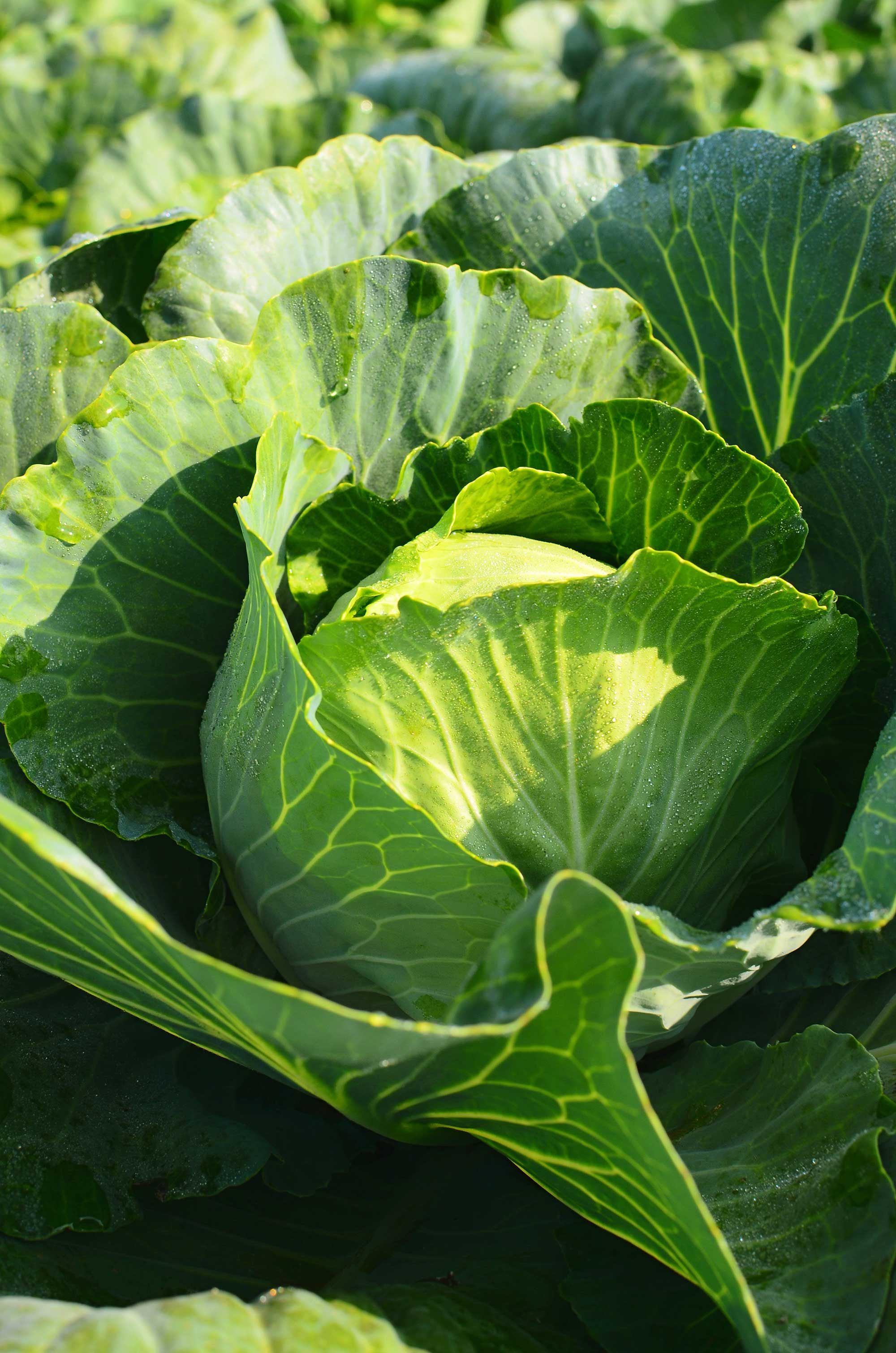
Want to grow more delicious leafy greens in your garden? You can also start to sow spring cabbages now. Anyone with a passion for winter brassicas will know that many brassicas need the whole of summer to reach full maturity for winter harvests, and ideally need to be sown in spring. However, many breeds of spring cabbage only mature in the new year and can be started now with time aplenty.
Try these tips to grow your own:
- Sow the seeds in cell trays or a seed bed in soil free of clubroot disease.
- Once large enough to handle, move the seedlings to their final positions in late September.
- Allow 12in (30cm) between rows and 6in (15cm) between plants when planting out.
- It's a good idea to keep the seedlings covered with fleece until October – this will deter cabbage root fly, which can be especially problematic in August.
- Add nitrogen-rich fertilizer in late winter for a bumper crop.
- Thin out alternate plants in spring, leaving the rest to develop.
- Add as a good mulching to keep things cool and well nourished.
For those who want to know how to grow cabbage, planting spring varieties is a great way to use some of the space that is becoming available on your plot now. We recommend trying 'First Early Market' or 'Wintergreen' varieties for open, spicy flavored greens that are ideal for stir-fries. You can also try the old favorite 'Durham Early' – a reliable grower which will be ready to harvest in February.
6. Carrots
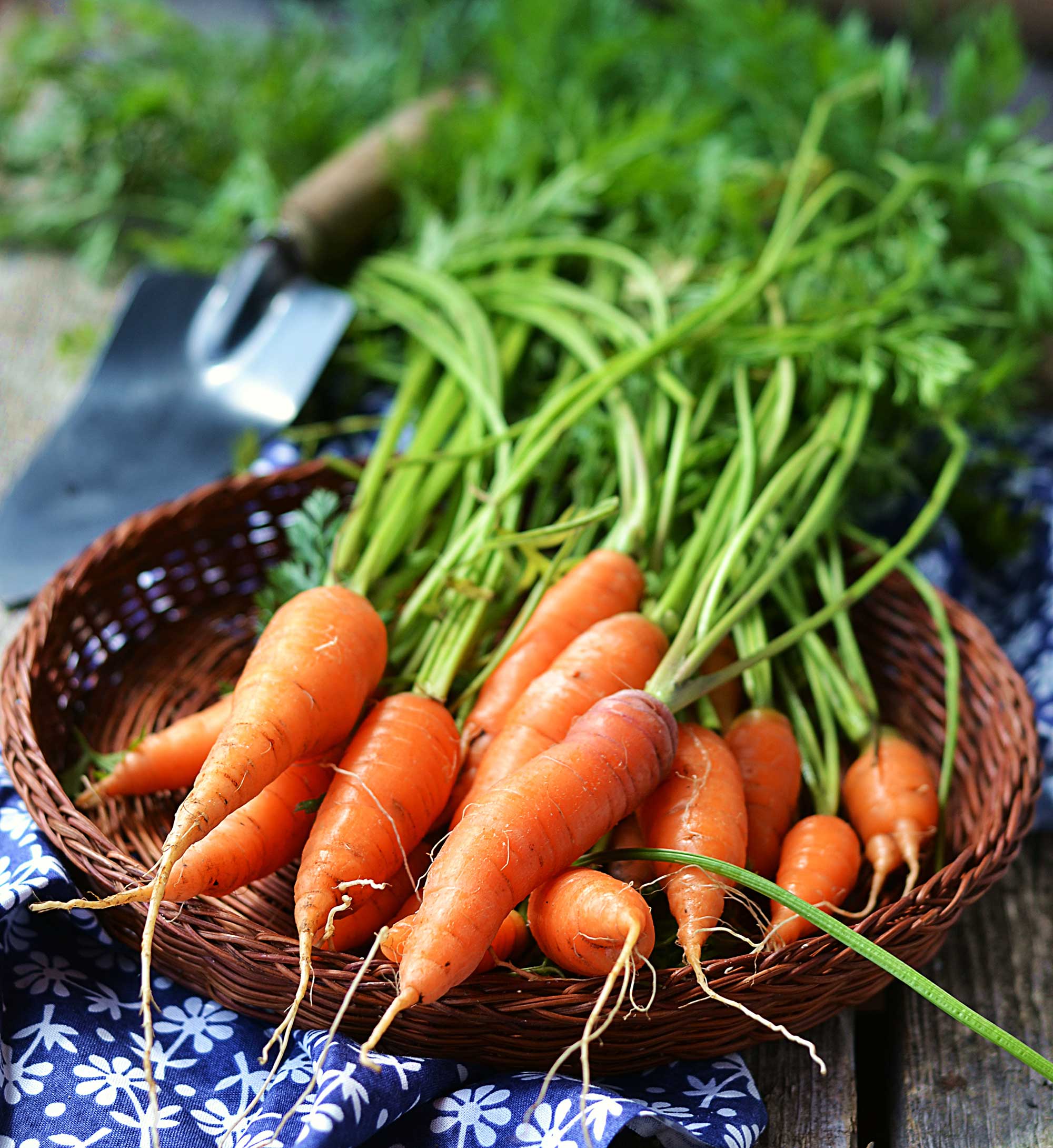
The simple carrot is a staple in kitchens – from crunchy coleslaws to delicious stocks for hearty stews. And we believe those grown at home are far superior to the kinds you find on the supermarket shelf. They simply had to make our list of the top vegetables to plant in July, especially if you pick robust varieties which will tolerate winter soils (such as 'Autumn King').
If you would like to know how to grow carrots with real crunch, Lucy Chamberlain recommends making sown drills of carrots in late July. Carrots are some of the best vegetables to grow in raised beds and the roots grow quickly in the warm summer soil, says Lucy. By late September, they'll have reached a perfectly petite size that makes an ideal addition to roast dinners and casseroles. They won't get much larger due to the cooler temperatures, but they can provide a healthy harvest right up until March.
7. Peas
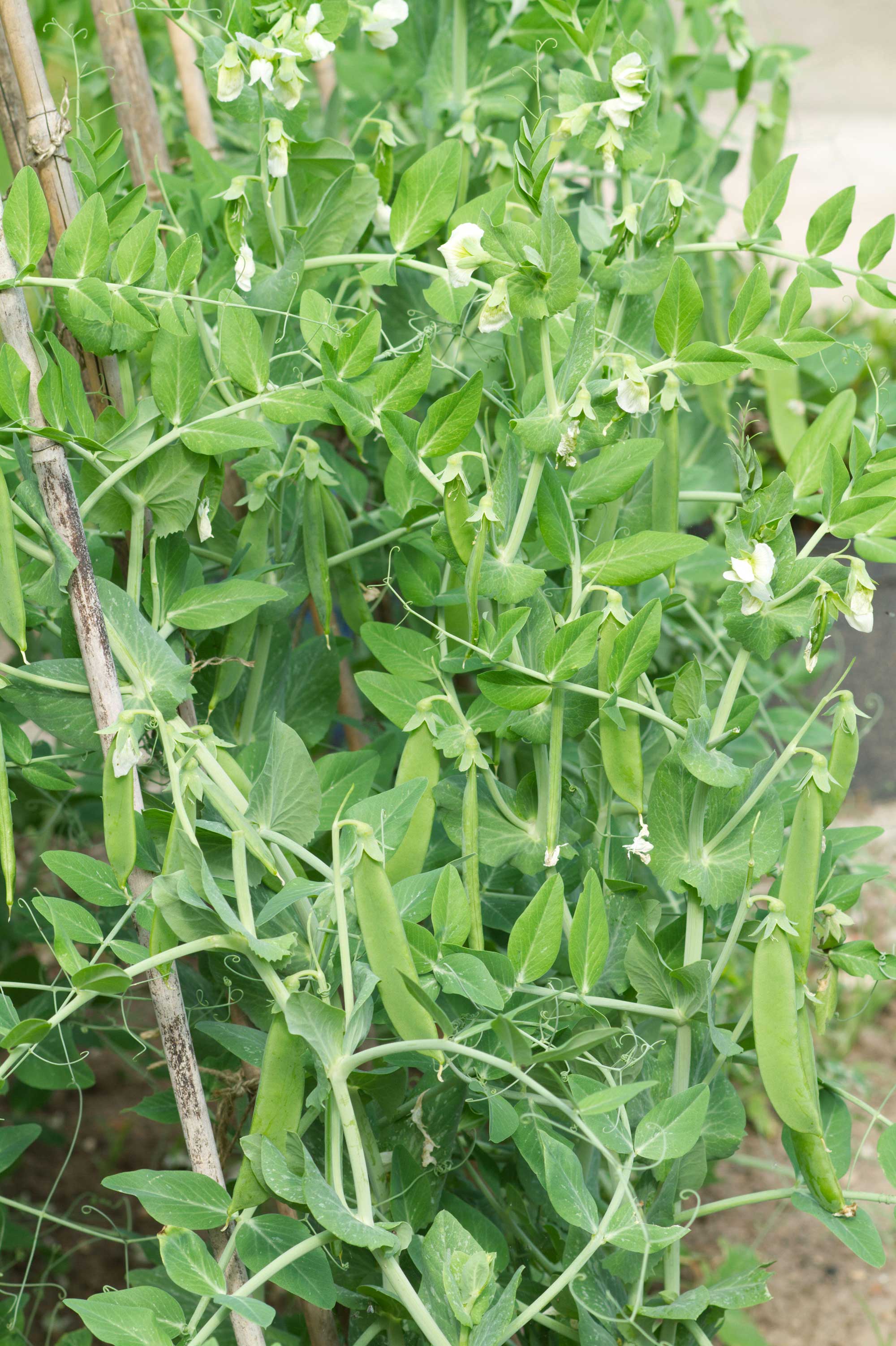
You may have sown peas way back in spring, in which case you'll already be plucking their sweet pods for use in summer salads. But as anyone who knows how to grow peas will tell you, there's still time to squeeze in some more – particularly if you've developed a passion for those poppable pods. So if you're quick, plant a final lot of seeds to enjoy before the frosts.
- Pick a weed-free position on moist, fertile, well-drained soil in full sun. If your soil is acidic, then the RHS suggests to add lime before sowing.
- Direct sow your pea seeds into flat bottomed drills at a distance of 2in (5cm) apart, and 1 1/2in (4cm) deep. Allow a distance of 30in (75cm) between rows.
- Keep the plants well watered, especially around flowering and podding.
- Take advantage of any trellis ideas you might have. The right climbing plant support will ensure your peas are kept healthy, so get creative with canes, poles or sturdy twigs.
There are lots of varieties which yield delicious results, but here are some of our top pea picks:
- 'Terrain': a brilliantly performing pea that's resistant to both downy and powdery mildew and offers a delicious harvest right up until the first heavy frosts. Each slightly curved pods holds around 7-8 peas, with two pods per node. The plants will grow to a height of 36in (90cm).
- 'Lusaka': a deliciously sweet, sugarsnap variety with stringless pods. They can be grown in pots as part of your patio gardening ideas.
- 'Sweet Horizon': a thin-skinned mangetout with good mildew resistance that can keep providing until October. Due to its size, it's an ideal contender if you're after vegetables to plant in July that are suitable for small plots.
8. Pak choi
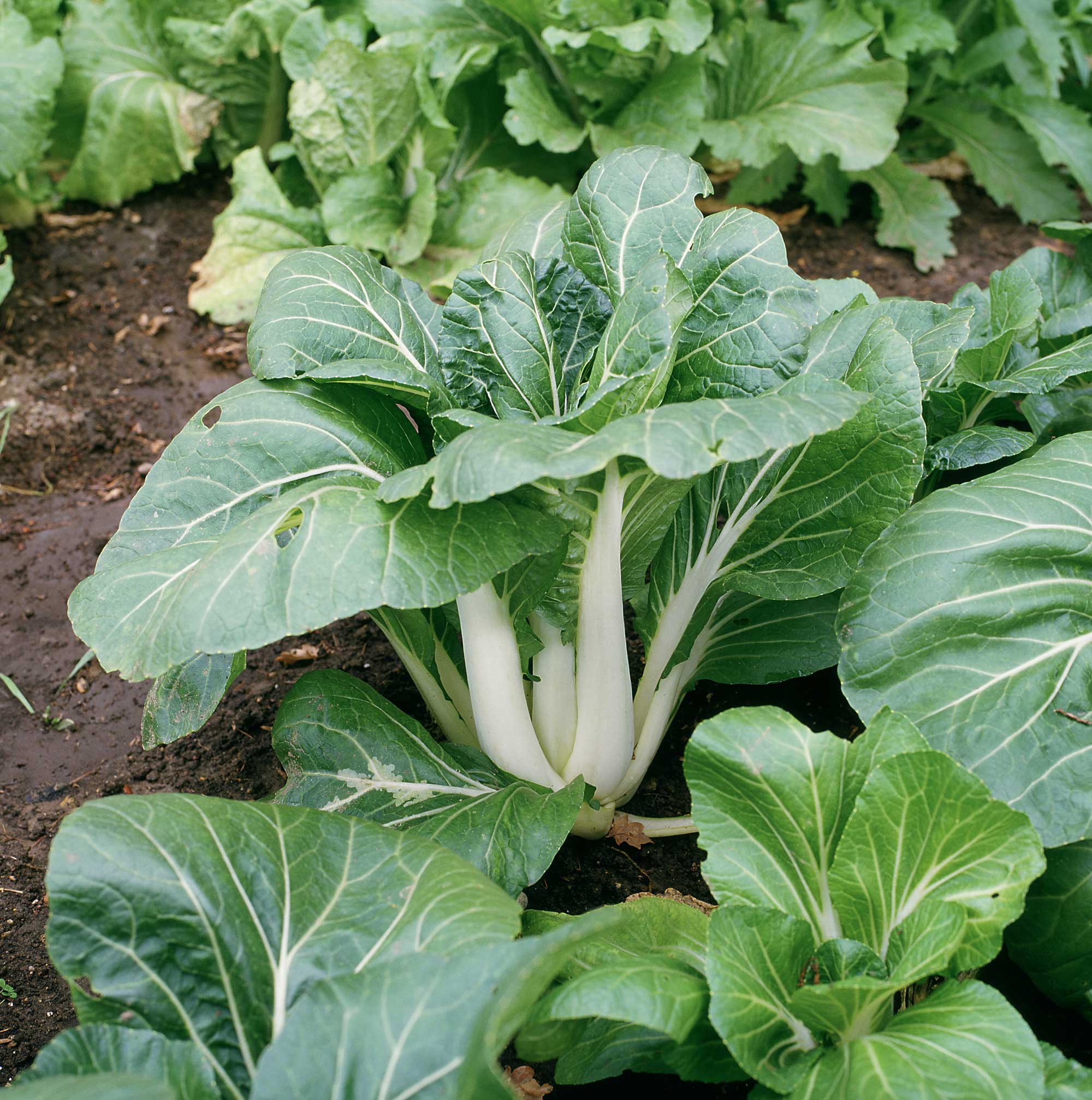
If you love cooking with Asian flavors, Chinese cabbage is a must-have. Knowing how to grow pak choi brings a touch of the exotic to your kitchen garden. But timing is everything – and the right time for this leafy loveliness is after the longest day of the year. Plant the seeds any earlier, and they might bolt.
Sow seeds thinly in short drills in sunny, fertile soil. Keep them watered as the seedlings emerge. Knowing the best time to water plants will help throughout August – as the plants will quickly bulk up. Thin them out as they grow to prevent overcrowding. If you just want to grow them for baby leaves, then they won't need much space. Plus, you'll only need to wait 30 days from sowing to harvest. If you're planning on growing them to a more mature size, aim to thin them so that they're 10–12in apart (25–30cm). They will take around 45–75 days to be ready for picking.
As well as the standard green and white types, you can also find purple-leaved varieties – we recommend 'F1 Rubi'.
9. Lettuce

Lettuce is a salad stalwart in the vegetable plot and is simple to grow. You can plant the seeds from March all the way up until September for a steady supply that's perfect for fresh salads and sandwiches. Sow straight into sunny, moisture-retentive soil and thin out the seedlings as they emerge. If you fancy growing vegetables in pots, lettuces make a good choice – just remember to keep on top of watering.
When sowing in summer, bear in mind that high soil temperatures can prevent some cultivars from germinating. So if the weather is particularly warm, sow seeds in the evening, sprinkle with cold water and provide some shade for the best results.
Lovers of companion planting should also consider pairing up their favorite lettuce varieties with other kitchen garden classics, either in a raised bed or in a dedicated veggie bed. Lettuce makes an ideal partnership with onions, and they are some of the best companion plants for carrots, beetroots and cilantro.
10. Florence fennel
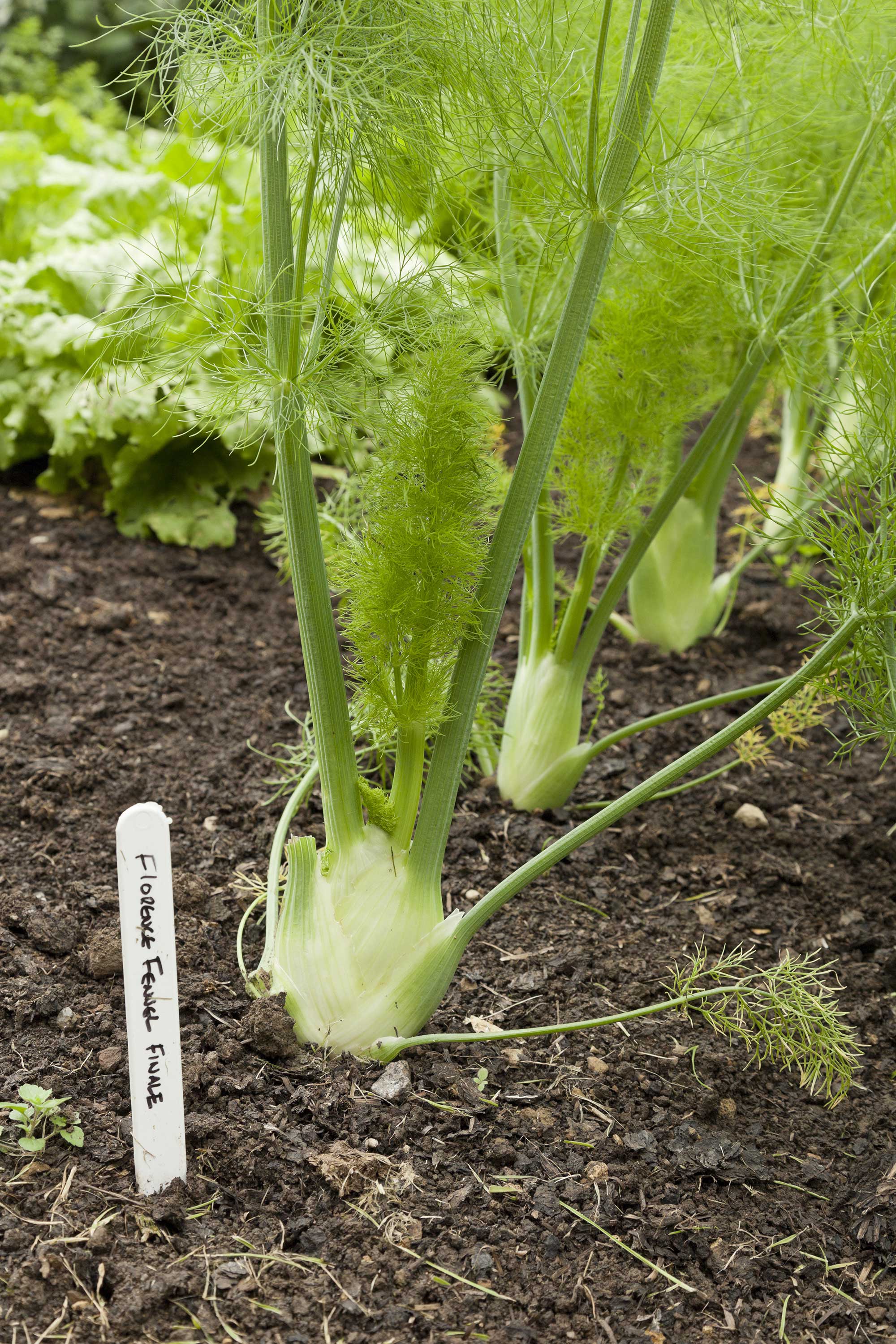
Florence fennel has large, creamy colored bulbs which are delicious when roasted with butter and seasoning, offering a subtle aniseed flavor. Its feathery leaves are also edible and make good garnishes for salads. Sow the seeds now, directly into the ground, as thinly as you can. This veggie likes warm, moist, sandy soils best. Opt for bolt-resistant varieties such as 'Cantino' or 'Colossal'.
Keep your fennel well-watered, and don't forget the importance of fertilizing plants regularly with a high potassium feed. If you grow potatoes, you will find it also helps to ‘earth up’ bulb fennel (as you do with spuds) to blanche the bulbs and keep them cool. Then all you need to do is keep them weed-free and water liberally until the fall. They're usually ready to harvest when the bases are around 3–4in wide (7–10cm).
Can you plant potatoes in July?
Most people plant their potatoes in March–April. However, if you know how to grow potatoes that way, and are now feeling confident enough to try something new, there is a way to delay the cropping season. if you fancy growing your own roasties for comforting winter meals (or even your Christmas lunch) this year, you can plant them in July or even August.
According to the RHS, you need to use cold-stored potato tubers. These are available from specialist seed merchants. 'Charlotte' and 'Maris Peer' are good choices and they won't need to be chitted before planting in a trench. Remove the foliage for composting after it dies down in early fall. They should take around 12 weeks until they're ready to harvest.
If you want to keep them in the ground until Christmas, and your garden is sheltered with light soil, you can simply pile earth followed by a layer of straw over the potatoes. In colder, wetter areas, it's best to lift them at the end of October and re-bury in soil or coarse sand in a frost-free place until you want to use them.
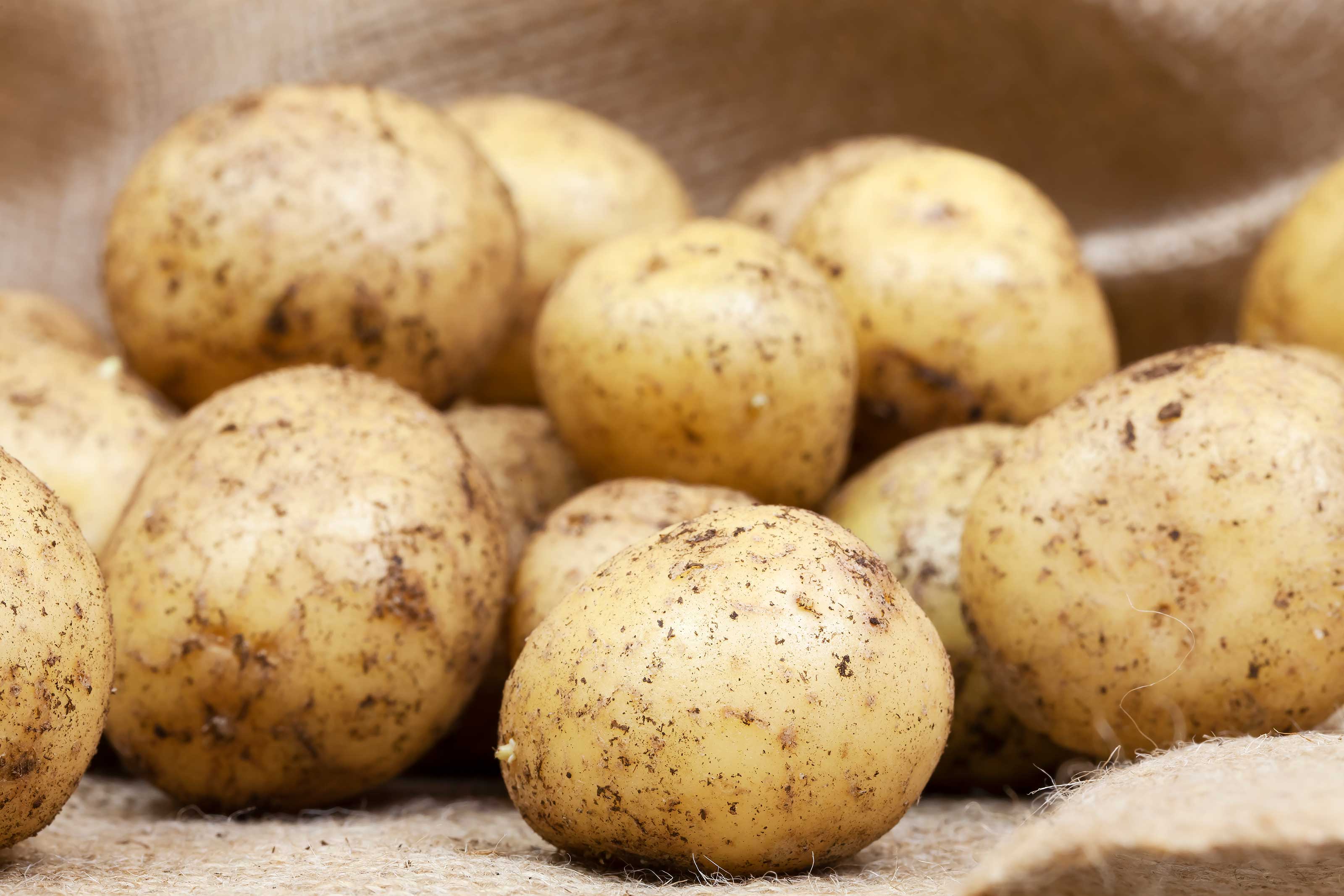
More top tips for growing vegetables in July
As well as getting all your new veggies off to a good start, there's plenty of maintenance to do for those that have already reached their prime.
- Don't forget to water your fruit and vegetable crops daily if the weather is warm. It's good to keep them continuously moist. And don't forget about watering plants while away on vacation – make a plan so you'll be better able to enjoy your holiday!
- Keep picking courgettes when they are still small and sweet, otherwise, they'll quickly turn into marrows.
- Pinch out side shoots on tomatoes and feed the plants with diluted tomato fertilizer once a week (or more if the leaves start to yellow).
- Make sure you have a plan of action so you know how to get rid of weeds – they'll happily sap away the nutrients from the soil if you're not careful now.

The garden was always a big part of Holly's life growing up, as was the surrounding New Forest where she lived. Her appreciation for the great outdoors has only grown since then. She's been an allotment keeper, a professional gardener, and a botanical illustrator – plants are her passion.
- Janey GouldingAssistant editor, Amateur Gardening magazine
